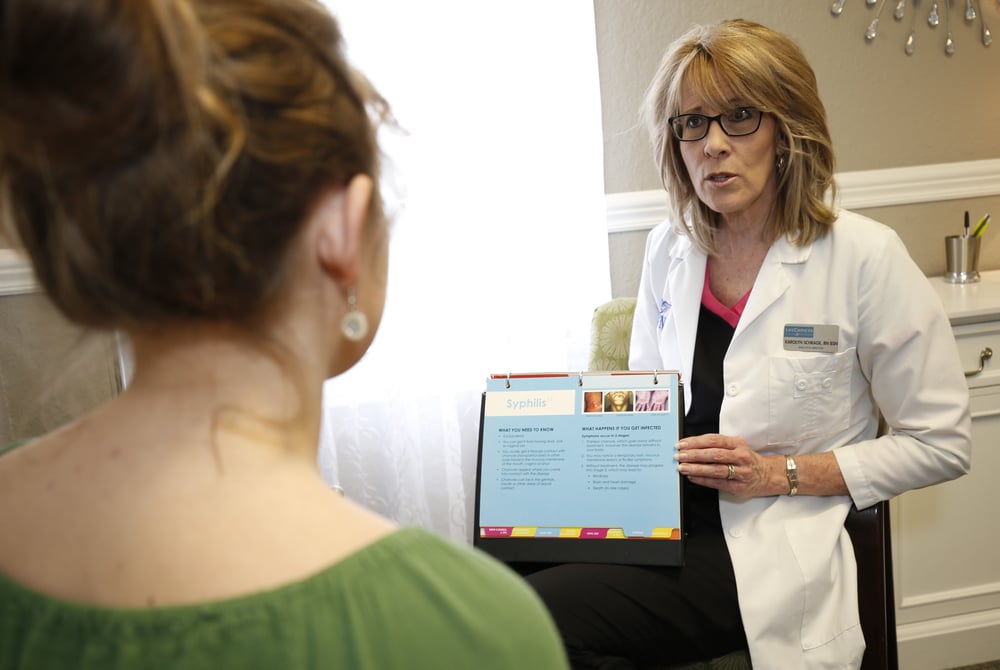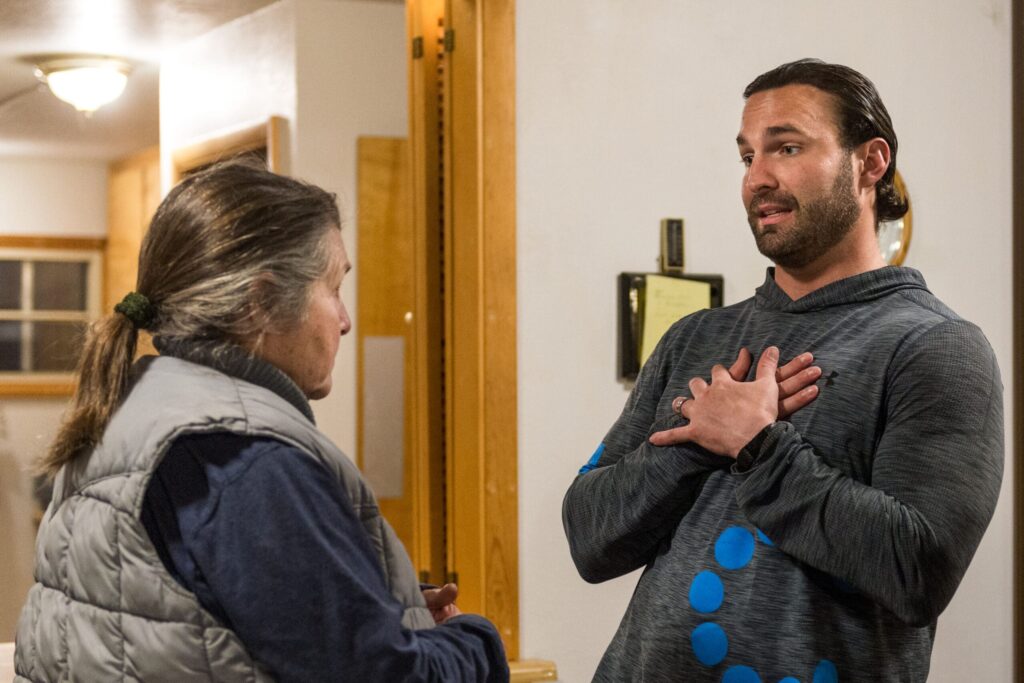Are Metro Areas Taking Rural Hospitals’ Travel Nurses?

Traditionally, travel nursing is known for helping rural hospitals thrive. Example: A less than 50-bed hospital in a remote town, hours from any large urban setting is unable to attract and retain long-term staff; so the facility relies heavily on healthcare travelers to bring skilled, quality care to the community. Travel nurses and allied professionals are typically offered better pay, benefits and flexibility at more rural facilities than they would get at home. But looking at recent trends in today’s travel healthcare market, rural facilities are being faced with more competition from metropolitan areas. A recent study by Navigant Healthcare reported 21 percent of rural hospitals nationwide are at high risk of closing, which includes 34 states that have five or more facilities at a great risk. Top states include Alabama, Mississippi, Georgia, Maine, Alaska, Arkansas, Oklahoma, Kansas, Michigan, Kentucky, Minnesota and Iowa. Alabama tops the list with the highest percentage of rural facilities most at risk, totaling 50 percent in the state. Chief policy officer at the Alabama Hospital Association Danne Howard recently shared with Modern Healthcare that this is “probably the most fragile of situations I have seen in my 23 years at the association.” Georgia follows close behind with 41 percent of the state’s rural facilities facing high risk of closure. Last week, the Augusta Free Press reported that Georgia is facing one of the worst nursing shortages in the country. According to the article, some resources are forecasting that by 2030, Georgia will be short up to 50,000 nurses needed to provide proper patient care. The healthcare staffing openings on the StaffDNA Job Board align with these reports, and it’s not only rural areas in need of travel healthcare professionals. Georgia’s two most populated cities, Atlanta and Augusta, have the state’s most openings for travel nurses and allied professionals on the StaffDNA Job Board. Depending on the specialty, travel RN positions in Georgia’s metro areas are offering similar to or even higher pay rates than the rural facilities. More than ever before, rural hospitals are competing with larger cities to attract healthcare professionals. This trend can be seen across the country. But being in a rural area doesn’t mean the patient pool decreases. Healthcare travelers are and will continue to be a driving force to keep rural facilities running and able to provide quality care in their communities. How are rural hospitals attracting travelers? Community. At rural facilities, travel nurses are treated like family, both in the hospital and out in the community. In a small-town setting, hiring managers look for travelers who are adaptable, and can understand and appreciate the local culture. Nurses and allied health professionals have their own reasons for traveling—experience new locations, pay off debt, build resume, avoid hospital politics, etc.—but one focus remains the same: patient care. Whether it’s a small rural facility or Level 1 trauma center in the heart of the city, healthcare travelers are making positive impacts in every community they serve. Read Next: How to Set Realistic Expectations for Your Healthcare Travel Career
As Syphilis Invades Rural America, A Fraying Health Safety Net Is Failing To Stop It (KHN)

By Lauren Weber, Kaiser Health News When Karolyn Schrage first heard about the “dominoes gang” in the health clinic she runs in Joplin, Mo., she assumed it had to do with pizza. Turns out it was a group of men in their 60s and 70s who held a standing game night — which included sex with one another. They showed up at her clinic infected with syphilis. That has become Schrage’s new normal. Pregnant women, young men and teens are all part of the rapidly growing number of syphilis patients coming to the Choices Medical Services clinic in the rural southwestern corner of the state. She can barely keep the antibiotic treatment for syphilis, penicillin G benzathine, stocked on her shelves. Public health officials say rural counties across the Midwest and West are becoming the new battleground. While syphilis is still concentrated in cities such as San Francisco, Atlanta and Las Vegas, its continued spread into places like Missouri, Iowa, Kansas and Oklahoma creates a new set of challenges. Compared with urban hubs, rural populations tend to have less access to public health resources, less experience with syphilis and less willingness to address it because of socially conservative views toward homosexuality and nonmarital sex. In Missouri, the total number of syphilis patients has more than quadrupled since 2012 — jumping from 425 to 1,896 cases last year — according to a Kaiser Health News analysis of new state health data. Almost half of those are outside the major population centers and typical STD hot spots of Kansas City, St. Louis and its adjacent county. Syphilis cases surged at least eightfold during that period in the rest of the state. At Choices Medical Services, Schrage has watched the caseload grow from five cases to 32 in the first quarter of 2019 alone compared with the same period last year. “I’ve not seen anything like it in my history of doing sexual health care,” she said. Back in 1999, the Centers for Disease Control and Prevention had a plan to eradicate the sexually transmitted disease that totaled over 35,000 cases nationwide that year. While syphilis can cause permanent neurological damage, blindness or even death, it is both treatable and curable. By focusing on the epicenters clustered primarily throughout the South, California and in major urban areas, the plan seemed within reach. Instead, U.S. cases topped 101,500 in 2017 and are continuing to rise along with other sexually transmitted diseases. Syphilis is back in part because of increasing drug use, but health officials are losing the fight because of a combination of cuts in national and state health funding and crumbling public health infrastructure. “It really is astounding to me that in the modern Western world we are dealing with the epidemic that was almost eradicated,” said Schrage. Grappling With The Jump Craig Highfill, who directs Missouri’s field prevention efforts for the Bureau of HIV, STD and Hepatitis, has horror stories about how syphilis can be misunderstood. “Oh, no, honey, only hookers get syphilis,” he said one rural doctor told a patient who asked if she had the STD after spotting a lesion. In small towns, younger patients fear that their local doctor — who may also be their Sunday school teacher or basketball coach — may call their parents. Others don’t want to risk the receptionist at their doctor’s office gossiping about their diagnosis. Some men haven’t told family members they’re having sex with other men. And still more have no idea their partner may have cheated on them — and their doctors don’t want to ask, according to Highfill. It’s even hard to expect providers who haven’t seen a case of syphilis in their lifetime to automatically recognize the hallmarks of what is often called the “great imitator,” Highfill said. Syphilis can manifest differently among patients, but frequently shows up for a few weeks as lesions or rashes — often dismissed by doctors who aren’t expecting to see the disease. Since 2000, the current syphilis epidemic was most prevalent among men having sex with men. Starting in 2013, public health officials began seeing an alarming jump in the number of women contracting syphilis, which is particularly disturbing considering the deadly effects of congenital syphilis — when the disease is passed from a pregnant woman to her fetus. That can cause miscarriage, stillbirth or birth deformities. Among those rising numbers of women contracting syphilis and the men who were their partners, self-reported use of methamphetamines, heroin or other intravenous drugs continues to grow, according to the CDC. Public health officials suggest that increased drug use — which can result in a pattern of risky sex or trading sex for drugs — worsens the outbreaks. That perilous trend is playing out particularly in rural Missouri, argues Dr. Hilary Reno, an assistant professor of medicine at Washington University School of Medicine in St. Louis who is researching syphilis transmission and drug use in the state. Tracking cases from 2015 through June 2018, she found that more than half of patients outside of the major metropolitan areas of Kansas City and St. Louis reported using drugs. Less Money, More Problems Federal funding for STD prevention has stayed relatively flat since 2003, with $157.3 million allocated for fiscal year 2018. But that amounts to a nearly 40% decrease in purchasing power over that time, according to the National Coalition of STD Directors. In Missouri, CDC annual funding has been cut by over $354,000 from 2012 to 2018 — a 17% decrease even as the number of cases quadrupled, Highfill said. Iowa, too, has seen its STD funding cut by $82,000 over the past decade, according to Iowa Department of Health’s STD program manager George Walton. “It is very difficult to get ahead of an epidemic when case counts are steadily — sometimes rapidly — increasing and your resources are at best stagnant,” Walton said. “It just becomes overwhelming.” Highfill bemoaned that legislatures in Texas, Oregon and New York have all allocated state money to raise
After Bitter Closure, Rural Texas Hospital Defies The Norm And Reopens (KHN)

By Charlotte Huff, Kaiser Health News Five months ago, the 6,500 residents of Crockett, Texas, witnessed a bit of a resurrection — at least in rural hospital terms. A little more than a year after the local hospital shut its doors, the 25-bed facility reopened its emergency department, inpatient beds and some related services, albeit on a smaller scale. Without a hospital, residents of Crockett, located 120 miles north of Houston, were 35 miles away along rural roads from the next closest hospital when a medical crisis struck, said Dr. Bob Grier, board president of the Houston County Hospital District, which is the county’s governmental authority that oversees Crockett, a public hospital. “Someone falls off the roof. A heart attack. A stroke. A diabetic coma. Start naming these rather serious things and health care is known for its golden hour,” he said. The late-July reopening of the newly named Crockett Medical Center makes it a bit of a unicorn in a state that has led nationally in rural hospital closures. Since January 2010, 17 of the 94 shuttered hospitals have been in Texas, including two that closed in December, according to data from the University of North Carolina’s Cecil G. Sheps Center for Health Services Research. But Crockett’s story also reflects some of the challenges faced by rural hospitals everywhere. Board members frequently have limited background in health care management and yet are responsible for making financial decisions. Add to that mix a Lone Star State resistance to raising local property taxes. An effort to increase the county’s 15 cents per $100 property valuation for the hospital district has been defeated twice since the hospital closed. And a small rural hospital like Crockett’s has “no leverage” when negotiating reimbursement rates with insurers, Grier repeatedly points out. The tough reality is that too many rural hospitals in Texas and elsewhere, when negotiating with insurers and other financial players, “are almost always negotiating from weakness and sometimes from literally leaning out over the edge of the [survival] cliff,” agreed Dr. Nancy Dickey, executive director of the A&M Rural and Community Health Institute at Texas A&M Health Science Center. Rural communities must think more creatively about how to meet at least some of their health needs without a traditional hospital, whether it’s forming partnerships with nearby towns or expanding telemedicine, Dickey said. “There is little doubt in my mind that many of these communities are going to see their hospitals close,” she said, “and are not going to be able to make an economic case to reopen them.” The A&M institute, which in December published a report looking at these challenges for three Texas communities, recently landed a $4 million, five-year federal grant to help rural hospitals nationwide keep their doors open or find other ways to maintain local health care. Demographics And Decisions The financial headwinds have been particularly fierce in Texas, one of 14 states that has not expanded Medicaid eligibility after the passage of the Affordable Care Act. “That makes a huge difference,” said John Henderson, chief executive officer of the Texas Organization of Rural & Community Hospitals, known in Texas rural circles as TORCH. “But that doesn’t change the reality that we aren’t going to do it.” Leading up to the state’s biennial legislative session, which begins in January, rural leaders are making the case that state legislators need to take steps to bolster the state’s 161 rural hospitals, starting with rectifying underpayments for Medicaid patients. As the state’s program has transitioned to managed care, over time reimbursements have shrunk to the point that rural hospitals are losing as much as $60 million annually, according to TORCH officials, who cite state data. They also support a congressional bill, HR 5678, that would make it easier for rural hospitals to close their inpatient beds but retain some services, such as an emergency room and primary care clinic. Under current federal regulations, facilities that make such a move are no longer considered a hospital and can’t be reimbursed by Medicare and Medicaid at hospital rates, which are often higher than payments to clinics or individual doctors. Those lower rates make it harder for stripped-down facilities to keep up their operations, said Don McBeath, TORCH’s director of government relations. Crockett’s hospital, then called Timberlands Healthcare, abruptly shut down in summer 2017 after just a few weeks’ notice from its management company, Texas-based Little River Healthcare. Little River, which was also the subject of an analysis by Modern Healthcare that showed several of its hospitals engaged in unusually high laboratory billing for out-of-state patients, has since filed for bankruptcy. Two other rural hospitals affiliated with Little River closed their doors in December As it struggled to stay open, Crockett’s hospital had been treating a population that was increasingly poor and aging, according to Texas A&M’s report. The researchers describe in the report — Crockett is “community 1” among three communities featured — that the hospital was overstaffed with more than 200 employees given its daily average census of three hospitalized patients. Also, they wrote, board members should have more closely questioned the management company. The board said they were given data at each meeting, “but that data did not suggest the imminent demise of the hospital,” the report’s authors wrote. Fighting The Closure Tide Leaders in Crockett tried to capture the interest of other hospital systems to reopen and manage the facility, without success, Grier said. Along with staffers losing their jobs, the community knew it would be more difficult to persuade people to relocate or retire to the area without a hospital nearby, he said. Every weekday at noon for weeks on end, a small group of two to 20 people gathered beneath the hospital’s front portico to pray for some avenue to reopen, Grier said. Then, as the odds looked increasingly long, they got a call out of the blue from two Austin-based doctors. “I feel God was involved,” Grier said. “They have told us that they were looking for some
Outsiders Swoop In Vowing To Rescue Rural Hospitals Short On Hope — And Money

Barbara Feder Ostrov, Kaiser Health News Photos by Heidi de Marco (@heidi_demarco) CEDARVILLE, Calif. — Beau Gertz faced a crowd of worried locals at this town’s senior center, hoping to sell them on his vision for their long-beloved — but now bankrupt — hospital. In worn blue jeans and an untucked shirt, the bearded entrepreneur from Denver pledged at this town hall meeting in March to revive the Surprise Valley Community Hospital — a place many in the audience counted on to set their broken bones, stitch up cattle-tagging cuts and tend to aging loved ones. Gertz said that if they vote June 5 to let him buy their tiny public hospital, he will retain such vital services. Better still, he said, he’d like to open a “wellness center” to attract well-heeled outsiders — one that would offer telehealth, addiction treatment, physical therapy, genetic testing, intravenous vitamin infusions, even massage. Cedarville’s failing hospital, now at least $4 million in debt, would not just bounce back but thrive, he said. Gertz, 34, a former weightlifter who runs clinical-lab and nutraceutical companies, unveiled his plan to pay for it: He’d use the 26-bed hospital to bill insurers for lab tests regardless of where patients lived. Through telemedicine technology, doctors working for Surprise Valley could order tests for people who’d never set foot there. To some of the 100 or so people at the meeting that night, Gertz’s plan offered hope. To others, it sounded suspiciously familiar: Just months before, another out-of-towner had proposed a similar deal — only to disappear. Outsiders “come in and promise the moon,” said Jeanne Goldman, 72, a retired businesswoman. “The [hospital’s] board is just so desperate with all the debt, and they pray this angel’s going to come along and fix it. If this was a shoe store in Surprise Valley, I could care less, but it’s a hospital.” Looking For Salvation The woes of Surprise Valley Community Hospital reflect an increasingly brutal environment for America’s rural hospitals, which are disappearing by the dozens amid declining populations, economic troubles, corporate consolidation and, sometimes, self-inflicted wounds. Nationwide, 83 of 2,375 rural hospitals have closed since 2010, according to the North Carolina Rural Health Research Program. These often-remote hospitals — some with 10, 15, 25 beds — have been targeted by management companies or potential buyers who promise much but often deliver little while lining their own pockets, according to allegations in court cases, a Missouri state audit and media reports. Enticed by such outsiders, some struggling rural hospitals around the country have embraced lab billing for faraway patients as a rescue plan. That’s because Medicare and commercial insurers tend to pay more for tests to sustain endangered rural hospitals compared with urban hospitals and especially outpatient labs. In general, this kind of remote billing is controversial and legally murky, and it recently has resulted in allegations of fraud in several states, according to government documents and media reports. Rural hospital boards, however, tend not to have expertise in the health care business. The president of Surprise Valley Community’s board, for instance, is a rancher. Another board member owns a local motel; a third, a construction company. That lack of experience “leaves them vulnerable in many cases,” said Terry Hill of the nonprofit National Rural Health Resource Center, based in Duluth, Minn. Seeking to distinguish himself from other would-be rescuers who ran into legal trouble, Gertz described his proposal to residents as perfectly legal — a legitimate use of telemedicine, essentially remote treatment via electronic communication such as video. “If you do it correctly,” he said in an interview with Kaiser Health News, “there is a nice profit margin. There [are] extra visits you can get from telemedicine but … it has to be billed correctly and it can’t be abused.” Gertz runs several companies — founded within the last four years —including two labs, SeroDynamics and Cadira Labs, as well as a wellness company called CadiraMD. He pledged in court documents to buy the bankrupt hospital for $4 million and cover its debts, saying he had lined up a $4 billion New York company as a financial backer. Kaiser Health News was unable to locate the company under the name Gertz cited, Next Genesis Development Group. He did not respond to emails seeking clarification on the issue. Gertz, who acknowledged that he had never before run a hospital, was asked at the same gathering whether he had disclosed his “financials” to the hospital board. “As a private entity, I don’t have to show my financials and I have not provided my financials to the board,” he replied. It was not clear whether board members had ever asked. Surprise Valley Health Care District board President John Erquiaga declined to comment. A Sad Decline Surrounded by the Warner and Modoc mountains and forests in California’s northeastern corner, Surprise Valley is home to four small communities. The largest is Cedarville, population 514, at last count. The valley, covered in sagebrush and greasewood, is part of Modoc County, one of California’s poorest, with a median income of about $30,000. The closest hospital with an emergency room is roughly 25 miles away, over a mountain pass. One of hundreds of rural hospitals built with help from the 1946 federal Hill-Burton Act, the Surprise Valley hospital opened in 1952 to serve a thriving ranching community. But it has struggled since, closing in 1981, reopening as a health clinic in 1985, then reconverting to a hospital in 1986. A county grand jury report in 2014-15 found that “mismanagement of the [hospital district] has been evident for at least the past five years.” By last summer, those in charge didn’t seem up to the task of running a modern hospital. By then, it was hardly a hospital at all. Crushed by debt, it primarily offered nursing home care, an emergency room, a volunteer ambulance service and just one acute care bed, with three others available if needed. When state inspectors arrived last June, they found chaos.
